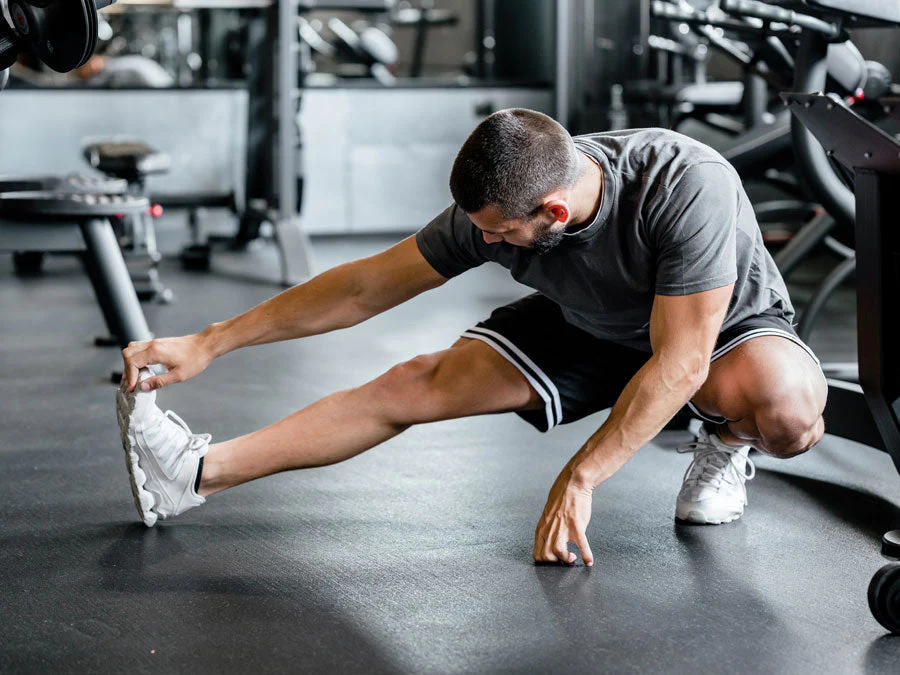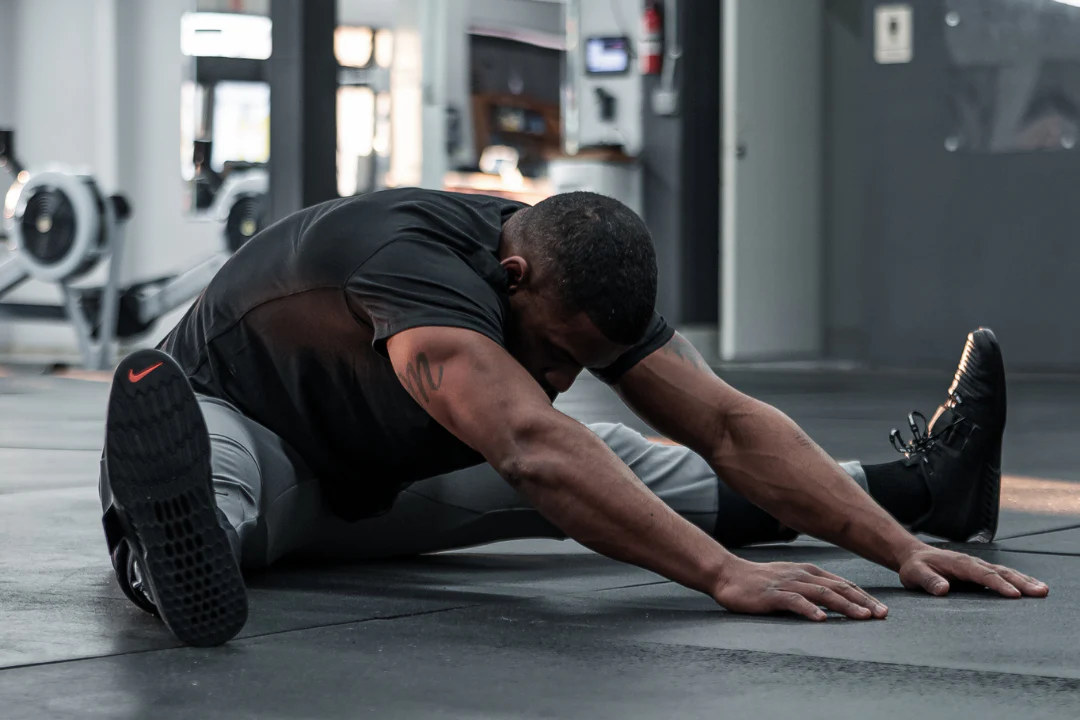How to Warm Up Before Lifting: A Proven 10-Minute Routine for Strength and Safety
Whether you’re chasing a personal best on deadlifts or looking to build lean muscle, how you start your workout can make or break your results. Yet, one of the most neglected parts of most lifting routines is also one of the most essential: the warm-up.
A proper warm-up does more than just “get you loose.” It prepares your body—and brain—for peak performance, helps prevent injury, and can even improve your long-term muscle gains.
In this article, we’ll break down:
- Why warming up matters (with scientific backing)
- Common mistakes lifters make
- What a great warm-up actually includes
- A simple, 10-minute evidence-based routine you can use before any lift
Let’s get into it.
🔬 Why Warming Up Matters: The Science Behind It
A warm-up isn’t just tradition—it’s performance optimization.
Here’s what the research and physiology tell us:
✅ 1. Increases Muscle Temperature and Blood Flow
Raising the temperature of your muscles improves enzymatic activity, oxygen delivery, and muscle elasticity. According to a review published in Sports Medicine, a well-structured warm-up improves strength and power output by up to 5–10% (Bishop, 2003).
✅ 2. Enhances Joint Mobility and Range of Motion
Mobilizing key joints before training (hips, shoulders, spine) primes the body for safer movement patterns—especially under load. A 2012 study in Journal of Strength and Conditioning Research showed improved squatting depth and control after dynamic warm-ups.
✅ 3. Activates Key Muscle Groups
Warming up “wakes up” often underactive areas like the glutes, core, and scapular stabilizers—improving posture, form, and muscle engagement during compound lifts.
✅ 4. Improves Neuromuscular Efficiency
Dynamic warm-ups improve motor unit recruitment, meaning your brain and muscles communicate more effectively, leading to better strength output and coordination.

❌ Common Warm-Up Mistakes to Avoid
Before jumping into what to do, let’s clarify what not to do.
🔻 1. Skipping the Warm-Up Entirely
This is the most common mistake—especially for intermediate and advanced lifters. Even if you “feel fine,” you’re leaving performance and safety on the table.
🔻 2. Static Stretching Before Lifting
Long static holds (like hamstring or quad stretches) before lifting can temporarily reduce strength and power output. Save these for the cool-down.
✅ Do this instead: Use dynamic movements and light activation drills pre-workout.
🔻 3. Warming Up Too Long or Too Randomly
Some people spend 20 minutes foam rolling, stretching, and doing every warm-up drill they’ve ever seen. This wastes time and can lead to fatigue before you even start your main sets.
🧠 What a Smart Warm-Up Includes
An effective warm-up should be:
- Short (10–15 minutes max)
- Specific (prepares you for the day’s main lifts)
- Progressive (moves from general to specific)
- Active (raises core temp and primes muscles)
🔑 The 3 Phases of a Proper Warm-Up:
| Phase | Focus | Examples |
| 1. General Movement (2–3 min) | Raise heart rate and core temp | Light cardio, jumping jacks, jump rope |
| 2. Mobility & Activation (4–5 min) | Open joints, activate key muscles | Hip circles, scap push-ups, glute bridges |
| 3. Movement Prep (3–5 min) | Rehearse patterns with light load | Bodyweight squats, push-up walkouts, light barbell sets |
🏋️ The Proven 10-Minute Warm-Up Routine
This routine works before any lifting session—upper, lower, full-body. It’s adjustable based on your needs and scalable based on intensity.
🔹 PHASE 1: General Warm-Up (2–3 minutes)
Purpose: Increase body temperature, stimulate blood flow.
Choose one (2 minutes total):
- Jump Rope – steady pace
- Rowing Machine – moderate pace
- Air Bike / Treadmill – light effort
- Jumping Jacks – 30–40 seconds on, 20 seconds off x2
✅ Keep intensity moderate. You should be lightly sweating and breathing faster, but not fatigued.
🔹 PHASE 2: Dynamic Mobility & Muscle Activation (4–5 minutes)
Purpose: Loosen tight areas, activate muscles, prep key joints.
🔸 Lower Body Days:
- World’s Greatest Stretch – 1 min
- 90/90 Hip Switches – 1 min
- Glute Bridge Marches – 2 sets x 10 reps
- Bodyweight Squats + Reach – 2 sets x 8 reps
🔸 Upper Body Days:
- Scapular Push-Ups – 2 sets x 10
- Banded Pull-Aparts – 2 sets x 15
- Wall Slides or Y-T-Ws – 2 sets x 10
- Inchworms with Cobra Stretch – 2 sets x 5
✅ Use control and full range of motion. Focus on muscle engagement.
🔹 PHASE 3: Specific Movement Prep (3–5 minutes)
Purpose: Rehearse the main lift, refine technique, ramp up the CNS.
Example: Warming Up for Barbell Squats
- Bodyweight Squats – 1×10 (controlled)
- Goblet Squat (light dumbbell) – 2×8
- Empty Barbell Squat – 2×5
- Ramp-up Sets – 2–3 sets gradually increasing to working weight (50–70% load)
Example: Warming Up for Bench Press
- Push-Ups – 2×10
- Banded Chest Press – 1×15
- Empty Bar Press – 2×8
- Ramp-up Sets – 2–3 sets increasing in load toward working sets
🔑 Don’t rush these sets. Focus on clean movement, bar path, and breathing.
🎯 Warm-Up Variations by Training Type
| Training Day | Focus | Additions to Warm-Up |
| Strength (low reps) | CNS activation | Include explosive bodyweight or jump variations (e.g., squat jumps, med ball slams) |
| Hypertrophy (volume work) | Joint resilience | Emphasize full-range mobility and high-rep activation drills |
| Olympic Lifts / Speed Work | Neural precision | Add drills like tall cleans, empty bar technique work |
| Recovery / Light Days | Circulation, stability | Focus on slow tempo, breathing, and mobility drills |
🧠 Warm-Up FAQs:
❓ Can I just do the empty barbell and go?
Not quite. While an empty bar is a great starting point for specific movement prep, your body still needs general and dynamic prep beforehand—especially if you’re tight, cold, or sitting all day.
❓ What about foam rolling?
Foam rolling has benefits, but keep it short (2–3 mins max) and targeted to tight areas like quads or upper back. Use it before Phase 2 if needed.
❓ Do warm-ups change as I get stronger?
Yes. As you lift heavier loads or age, your warm-up becomes more important. You may need more ramp-up sets or mobility work. Adjust accordingly.
🏆 Practical Takeaways: How to Apply This Today
Here’s how to make the most of your warm-up, no matter your training level:
✅ Beginners:
- Stick with this 10-minute framework every session
- Learn correct technique in warm-ups (it’s skill practice too)
- Focus on activation and mobility—this pays off long-term
✅ Intermediate Lifters:
- Customize based on your workout (upper vs lower, strength vs pump)
- Use warm-up time to refine form and address weak links
- Prioritize ramp-up sets before big lifts (e.g., squats, deadlifts)
✅ Advanced Lifters:
- Use warm-ups to correct chronic tightness, improve power output
- Add movement variability (bands, tempo, light jumps)
- Don’t skip it—warm-ups help you stay injury-free as loads increase
🧩 Final Thoughts: Warm Up to Win
Skipping your warm-up might save you 10 minutes—but it costs you performance, progress, and potentially injury. A science-based, strategic warm-up primes your body and mind for success under the bar.
The next time you train, commit to this 10-minute sequence:
- 2–3 minutes: light cardio
- 4–5 minutes: dynamic mobility and muscle activation
- 3–5 minutes: movement-specific prep
Train hard. But first—warm up smart.
Want more proven routines and programming insights? Check out our [Workout Library] or download our free Strength Starter Guide—perfect for lifters who want to train smarter, not just harder.




